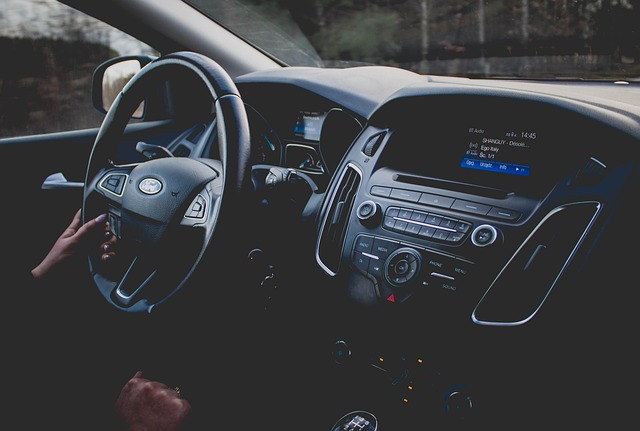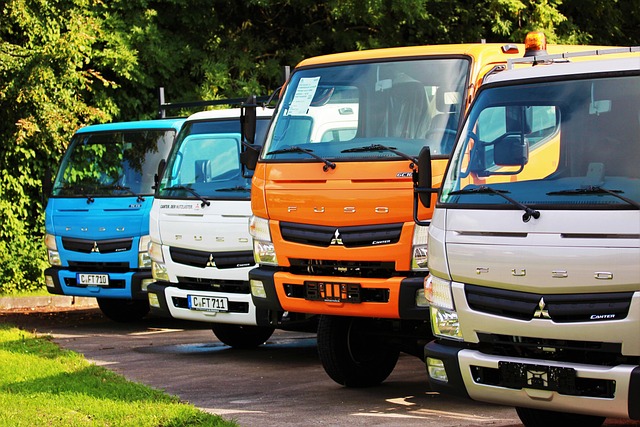Looking to register your car in California? This comprehensive guide walks you through every step, from understanding the process to gathering essential documents. We’ll explore both online and in-person registration methods using the DMV’s convenient VIN Verifier tool. Learn how to navigate the California DMV office, post-registration tasks, and important considerations for a smooth experience.
- Understanding the California Car Registration Process
- Gathering Required Documents for Registration
- How to Use DMV's Online Services and VIN Verifier
- Visiting a California DMV Office for Registration
- Post-Registration Steps and Important Considerations
Understanding the California Car Registration Process

Understanding the California Car Registration Process
In California, car registration is a crucial step after purchasing a vehicle. The process involves several key steps, including gathering necessary documents and passing a Vehicle Identification Number (VIN) inspection. The first step is to visit a California Department of Motor Vehicles (DMV) office or use their online services to apply for registration. You’ll need to provide proof of ownership, such as a purchase agreement or title, along with valid identification. Once your application is approved, you’ll receive a registration certificate and license plates.
A key component of the California car registration process is the VIN inspection, which is typically conducted by a certified inspector. This involves verifying the accuracy of the vehicle’s VIN through a DVW (DMV) approved VIN verifier. For convenience, many opt for mobile VIN verification services that come to their location, ensuring a hassle-free and accurate inspection. By completing these steps, California car owners not only comply with legal requirements but also ensure their vehicles are properly documented and safe to operate on public roads.
Gathering Required Documents for Registration

Before you begin the registration process for your vehicle in California, there are several crucial documents you’ll need to gather. The first step is to obtain a Vehicle Identification Number (VIN) verification from a trusted source, such as the DMV or a reputable vin inspection service. This step is essential as it ensures the vehicle’s history and authenticity. In some cases, you may opt for a mobile VIN verification or a vin inspection conducted by professionals who can provide instant and accurate data.
Once you have your VIN, you’ll require various documents including the title (if applicable), registration certificates from previous states (if the car has been relocated), proof of insurance, and valid driver’s licenses for all listed drivers. It’s important to ensure these documents are up-to-date and accurate to streamline the registration process at the California Department of Motor Vehicles (DMV).
How to Use DMV's Online Services and VIN Verifier

The California DMV offers a range of online services to streamline the car registration process. One key tool is the DMV Vin Verifier, which allows users to quickly validate vehicle information. Here’s how it works: first, visit the official DMV website and navigate to the VIN Verifier page. Enter your vehicle’s unique Vehicle Identification Number (VIN) into the designated field. The system will then cross-reference this data against its records to verify key details such as the make, model, year, and potential liens on the car. This is a crucial step in ensuring you’re registering a legitimate vehicle with no outstanding issues.
For added convenience, consider using mobile vin inspection services or vin verifier apps. These tools provide an even faster alternative to the online verifier by offering real-time, on-demand checks directly from your smartphone. By leveraging these digital resources, you can save time, avoid potential errors, and have a smoother registration experience overall.
Visiting a California DMV Office for Registration

Visiting a California DMV Office for Registration
If you prefer a more traditional approach or need assistance with paperwork, visiting a local California DMV office is a straightforward option. Before heading in, ensure that you have all necessary documents, including proof of ownership, your driver’s license, and any required registration fees. At the DMV, you’ll need to complete an application for vehicle registration, which can be done online or in-person. One crucial step during this process is the verification of your Vehicle Identification Number (VIN). Many California DMV offices are equipped with VIN verifiers that ensure the accuracy of the provided information and help prevent fraud.
For added convenience, some services offer mobile VIN verification options, allowing you to complete a vin inspection right from your location. This can be especially useful for those who have limited mobility or prefer not to visit a physical office. Alternatively, many people opt for online registration, but be sure to double-check the accuracy of all entered details, as errors may cause delays in processing.
Post-Registration Steps and Important Considerations

After successfully registering your car with the California Department of Motor Vehicles (DMV), there are several crucial post-registration steps to complete and important considerations to keep in mind. One key step is to obtain a Vehicle Identification Number (VIN) verifier from the DMV, which plays a vital role in ensuring the authenticity of your vehicle’s identification details. This verifier can be used for both mobile VIN verification and traditional vin inspection, making it an essential tool for maintaining compliance with California’s vehicle registration regulations.
Additionally, keep in mind that regular maintenance and inspections are mandatory to maintain your car’s registration status. These include timely renewal of registration, ensuring up-to-date insurance coverage, and periodic safety inspections. If you opt for a mobile VIN inspection service, it can simplify these processes by allowing professionals to conduct necessary checks at your convenience, further emphasizing the importance of staying current with California’s vehicle registration requirements.
Registering a car in California is a straightforward process that can be completed through various methods. By understanding the requirements, gathering essential documents, and utilizing tools like the DMV’s online services and VIN verifier, you can efficiently navigate the registration process. Whether you choose to do it online or in-person at a DMV office, ensuring your vehicle’s compliance with California regulations is key. After registration, remember to take care of post-registration tasks for a seamless ownership experience.
